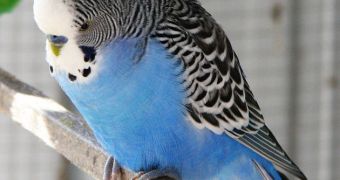Researchers at the US Department of Energy’s (DOE) SLAC National Accelerator Laboratory say that they have taken the first steps towards figuring out how birds looked like more than 100 million years ago, during a time when dinosaurs still ruled the world.
The fact that birds are directly derived from dinosaurs is widely accepted at this point, but experts are very interesting in knowing how the two groups of animals looked like and interacted while they were occupying the same environment.
Using the Stanford Synchrotron Radiation Lightsource (SSRL), the SLAC investigators were just able to track down the chemical traces of a pigment that early birds may have used to create patterns on their wings. This would represent the first time patterns are found on ancient wings.
At this time, most bird species feature patterns on their feathers, but evolutionary biologists argue that this was not always the case, especially in this group of animals' earliest days. The pigment the team found and analyzed is called eumelanin.
Despite its old age, the pigment can still be found in a large number of species today, including in humans. It is the element that colors brown eyes and dark hair, experts explain. Together with other pigments, it may have contributed to the structural properties and colors of birds’ feathers.
Details of the new investigation were published in the June 30 issue of the esteemed journal Science Express. The role of pigments is widely overlooked in studying evolution. The colors are involved in such things as camouflage, communication and selecting mates.
“This is a pigment that evolved a very, very long time ago but is still actively synthesized by organisms on the planet, and we found a way to map it and show its presence over 120 million years of geological time passing,” explains Roy Wogelius.
“It is a direct relationship between you, me, and some extremely old organisms,” adds the expert, who holds an appointment as a geochemist at the University of Manchester, in the United Kingdom. He is also one of the leaders of the international group of efforts that led the research effort.
“If we could eventually give colors to long extinct species, that in itself would be fantastic. Synchrotron radiation has revolutionized science in many fields, most notably in molecular biology,” adds SLAC expert and study coauthor Uwe Bergmann.
“It is very exciting to see that it is now starting to have an impact in paleontology, in a way that may have important implications in many other disciplines,” the investigator goes on to say.
“These new techniques for teasing out evidence of pigmentation will take a lot of the guesswork out of reconstructing the appearance of extinct dinosaurs and birds,” concludes James Gurney, who is a renowned dinosaur illustrator and th eauthor of the best-selling Dinotopia series.

 14 DAY TRIAL //
14 DAY TRIAL //